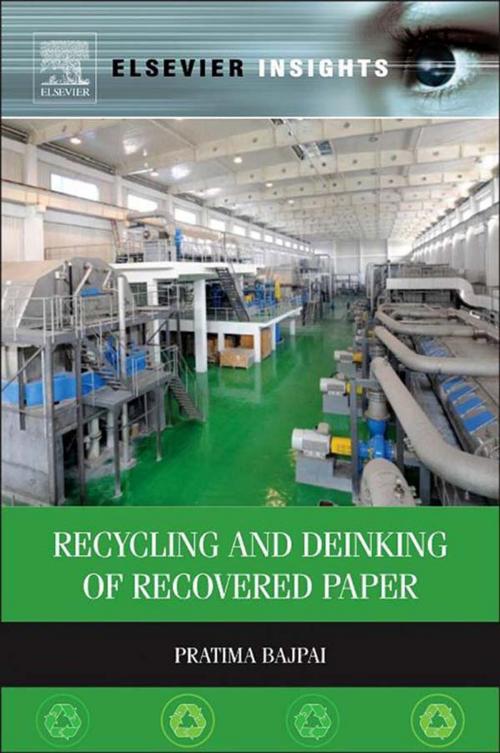Recycling and Deinking of Recovered Paper
Nonfiction, Science & Nature, Science, Biological Sciences, Environmental Science, Nature| Author: | Pratima Bajpai | ISBN: | 9780124171695 |
| Publisher: | Elsevier Science | Publication: | November 21, 2013 |
| Imprint: | Elsevier | Language: | English |
| Author: | Pratima Bajpai |
| ISBN: | 9780124171695 |
| Publisher: | Elsevier Science |
| Publication: | November 21, 2013 |
| Imprint: | Elsevier |
| Language: | English |
Paper recycling in an increasingly environmentally conscious world is gaining importance. Increased recycling activities are being driven by robust overseas markets as well as domestic demand. Recycled fibers play a very important role today in the global paper industry as a substitute for virgin pulps. Paper recovery rates continue to increase year after year
Recycling technologies have been improved in recent years by advances in pulping, flotation deinking and cleaning/screening, resulting in the quality of paper made from secondary fibres approaching that of virgin paper. The process is a lot more eco-friendly than the virgin-papermaking process, using less energy and natural resources, produce less solid waste and fewer atmospheric emissions, and helps to preserve natural resources and landfill space.
Currently more than half of the paper is produced from recovered papers. Most of them are used to produce brown grades paper and board but for the last two decades, there is a substantial increase in the use of recovered papers to produce, through deinking, white grades such as newsprint, tissue, market pulp.
By using recycled paper, companies can take a significant step toward reducing their overall environmental impacts. This study deals with the scientific and technical advances in recycling and deinking including new developments.
- Covers in great depth all the aspects of recycling technologies
- Covers the latest science and technology in recycling
- Provides up-to-date, authoritative information and cites many mills experiences and pertinent research
- Includes the use of biotech methods for deinking, refining. and improving drainage
Paper recycling in an increasingly environmentally conscious world is gaining importance. Increased recycling activities are being driven by robust overseas markets as well as domestic demand. Recycled fibers play a very important role today in the global paper industry as a substitute for virgin pulps. Paper recovery rates continue to increase year after year
Recycling technologies have been improved in recent years by advances in pulping, flotation deinking and cleaning/screening, resulting in the quality of paper made from secondary fibres approaching that of virgin paper. The process is a lot more eco-friendly than the virgin-papermaking process, using less energy and natural resources, produce less solid waste and fewer atmospheric emissions, and helps to preserve natural resources and landfill space.
Currently more than half of the paper is produced from recovered papers. Most of them are used to produce brown grades paper and board but for the last two decades, there is a substantial increase in the use of recovered papers to produce, through deinking, white grades such as newsprint, tissue, market pulp.
By using recycled paper, companies can take a significant step toward reducing their overall environmental impacts. This study deals with the scientific and technical advances in recycling and deinking including new developments.
- Covers in great depth all the aspects of recycling technologies
- Covers the latest science and technology in recycling
- Provides up-to-date, authoritative information and cites many mills experiences and pertinent research
- Includes the use of biotech methods for deinking, refining. and improving drainage















